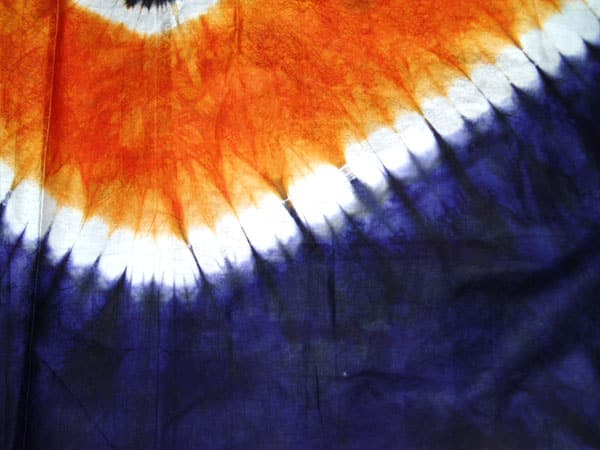Looking for things to do with your toddler? You should tie and dye!
January, and now February, has been (as to be expected) wet, grey and miserable in London. What else is new eh? Anyhoos, I’m not a very arts and crafts type of person, so I’ve been racking my brain for a little while over what to do at home with my little human over the half term break next week. Then I remembered I got some free clothes dye from Dylon, so decided to try to tie and die.
What is tie and dye?
The process of tie–dye typically consists of folding, twisting, pleating, or crumpling fabric or a garment and binding with string or rubber bands, followed by application of dye(s).
As a Nigerian and of Yoruba heritage, tie and dyeing is something I have always known about. Some ethnic materials were made by the tie and dye process. The material is known as adire.
Adire (Yoruba: tie and dye) textile is the indigo–dyedcloth made in southwestern Nigeria by Yoruba women, using a variety of resist-dyeing techniques.[1][2] As the translation of the name suggests, the earliest pieces of this type were probably simple tied designs on cotton cloth handspun and woven locally (rather like those still produced in Mali), but in the early decades of the 20th century new access to large quantities of imported shirting material via the spread of European textile merchants in Abeokuta and other Yoruba towns caused a boom in these women’s entrepreneurial and artistic efforts, making adire a major local craft in Abeokuta and Ibadan, attracting buyers from all over West Africa. The cloth’s basic shape became that of two pieces of shirting material stitched together to create a women’s wrapper cloth.[3] New techniques of resist dyeing developed. Today, there are three primary resist techniques used in Nigeria:
- Oniko: this process involves tying raffia around hundreds of individual corn kernels or pebbles to produce small white circles on a blue background. The fabric can also be twisted and tied on itself or folded into stripes.
- Alabere: Stitching raffia onto the fabric in a pattern prior to dyeing. The raffia palm is stripped, and the spine sewn into the fabric. After dyeing the raffia is usually ripped out, although some choose to leave it in and let wear and tear on the garment slowly reveal the design.
- Elecko: Resist dyeing with cassava paste painted onto the fabric. Traditionally done with different size chicken feathers, calabash carved into different designs are also used, in a manner similar to block printing. Since the early twentieth century, metal stencils cut from the sheets of tin that lined tea chests have also been used.[4][5]
Most of the designs are named, with popular ones including the jubilee pattern, (first produced for the silver jubilee of George V and Queen Mary in 1935), Olokun (“goddess of the sea”), and Ibadadun (“Ibadan is sweet”). Nigeria is also known for its two-tone indigo resist designs, created by repeat dyeing of cloth painted with cassava root paste to create a deep blue; the paste is then washed out and the cloth dyed a final time. Quality cloth is dyed 25 or more times to create a deep blue-black color before the paste is washed out. Additional forms of indigo resist-dyeing exist in other parts of West Africa; for example, the Bamana of Mali use mud resist, while Senegalese dyers use rice paste rather than cassava root. And the Ndop of Cameroon use both stitch resist and wax resist.[4]
The tradition of indigo dyeing goes back centuries in West Africa. The earliest known example is a cap from the Dogon kingdom in Mali dating to the 11th century, dyed in the oniko style.[4]
Below is a picture of an adire material I found on Google images.

How to tie and dye using Dylon dyes
Using the free dyes I had from Dylon, I did a test run to see how it would come out. I fold an old pillow case into two and tied it twice in the middle using some strings. I dyed one half of the pillow in one colour then the other half in another colour.
Here’s the result, what do you think of my first try?

Please note that if you dye your clothes, you would need to wash them separately as the colour does run.




